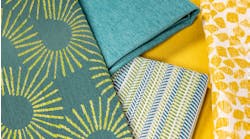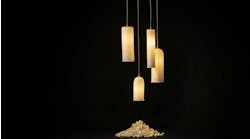Petroleum-based plasticizers and phthalates have long been used by the contract industry to make PVC yarns soft and supple, but growing concerns about the human health impacts of chemicals and the consequences of unfettered fossil fuel usage have pushed manufacturers to look for friendlier, more natural alternatives.
One of the newest developments to hit the market is TerraStrand™ yarn by Chilewich, which uses vegetable compounds in place of petroleum compounds to add flexibility and durability to the company’s flooring, upholstery textiles, and wallcoverings. Here’s how it all breaks down:
0 — The number of phthalates used in TerraStrand yarns.
25 — The percentage of renewable vegetable content found in TerraStrand yarns.
55 — The percentage of recycled content found in BioFelt® floor tile backings when combined with TerraStrand fibers.
6,400 — Gallons of gas will be saved each year, thanks to the company’s switch from petroleum-based plasticizers to renewable vegetable compounds.
192,000 — Miles, the distance your average car could drive with the gasoline saved.
100 — Percent of Chilewich Contract products will be made with TerraStrand by 2015. (It is currently featured in 75 percent of Chilewich Contract products.)


